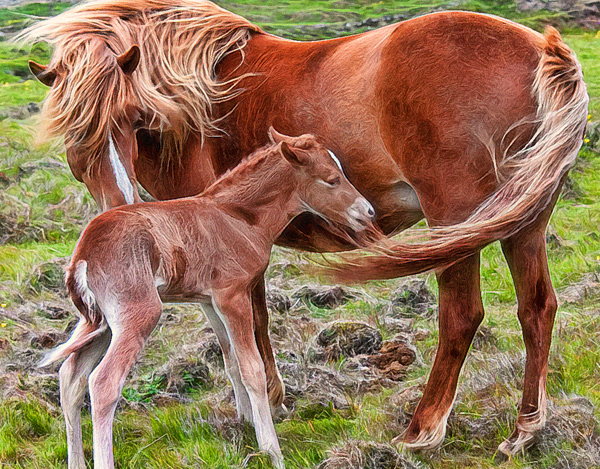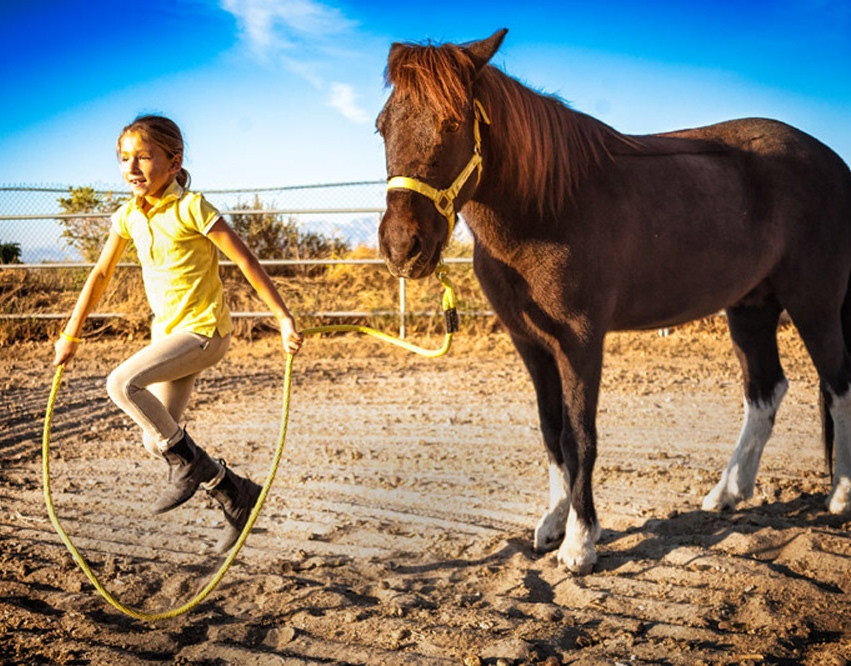
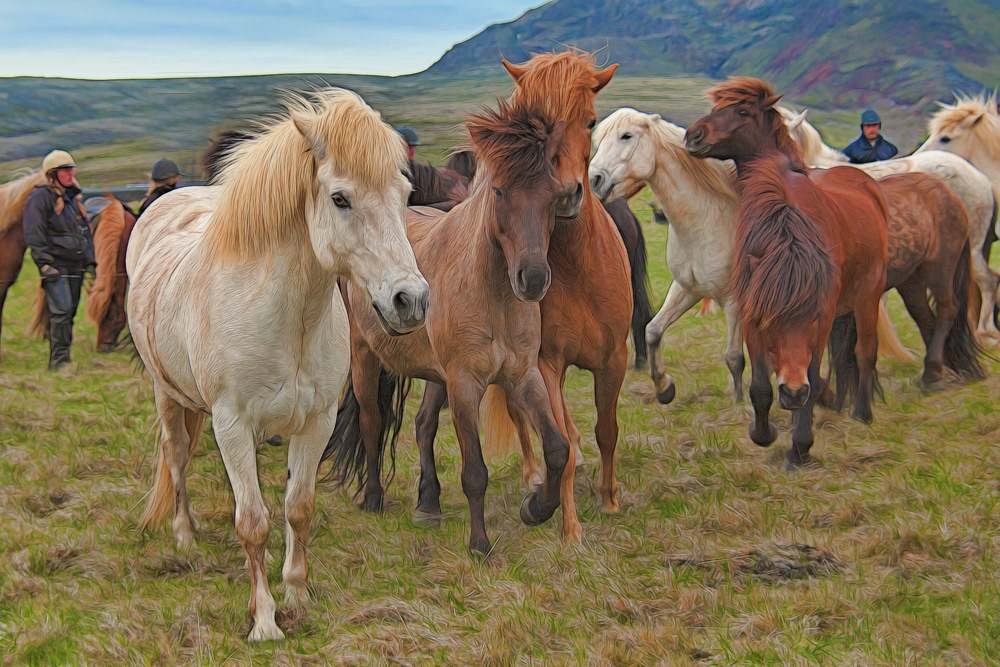

“Every breed of horse is the direct result of the needs and desires of the culture that has created it.”
“In the old days in Iceland, it was desirable for the horse to always move a tad faster forward than the rider asked. The philosophy was that restraining a horse is far less tiring than constantly having to push it forward.
Riding in a group alongside a large herd of loose horses is an amazing experience. It is fun, challenging, and exciting.



Today trekking has become big business in Iceland and --once again--the horse has become one of Iceland’s mainstays.
Tourists are flocking to the country and trekking companies are booming. Icelandic horse owners and others from everywhere want to follow in the hoof prints of the Vikings and ride incredible horses across magnificent landscapes.




As a result, breeders can no longer rely on selling their show horse culls to fill the needs of the industry. As a result the breeding goals are slowly changing from flash to bringing back more emphasis on old values like safety, strength, comfort, friendliness. Over time, this will guarantee that the traits which used to be considered most important will survive. Top trekking horses need to be staunch, sure-footed, and street smart with boundless stamina. They must be beautiful, comfortable to ride and have great temperament, sturdy, healthy bodies, and strong legs.




Practically everyone--beginners and experienced horsemen alike rave about their trekking experiences regardless of whether they just rode for an hour or several days and weeks.
Nonetheless, it is the several day treks--where a large herd of loose horses are brought along--that capture the imagination and become your adventure of a lifetime. Through them, you develop a new sense and understanding of the horses. And once you have been on the road for a while, you feel as if you have stepped several hundred years back and are reliving history.
You begin the trek one person and come back another with a deeper understanding of life, itself.
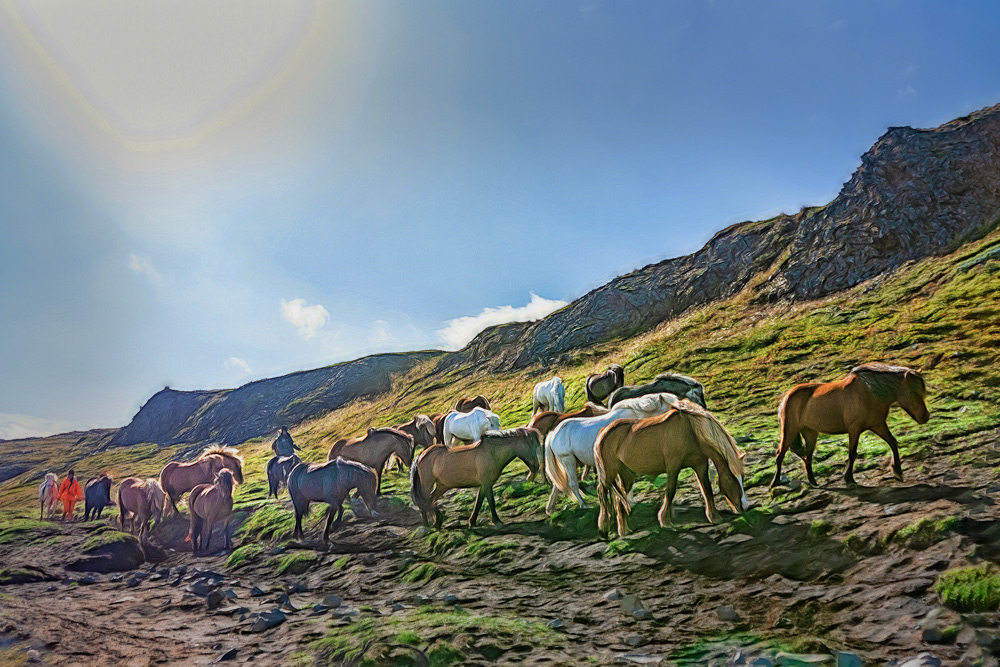



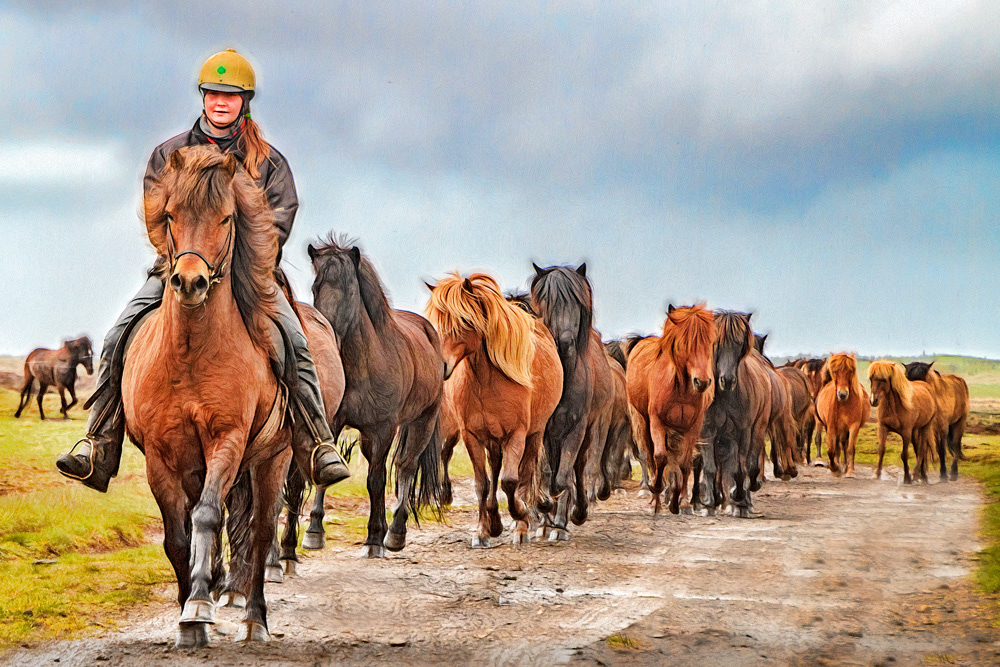

Horses have the right away in Iceland and most roads in Iceland
have riding trails adjacent to them. This makes traveling with a loose herd of horses much easier.
have riding trails adjacent to them. This makes traveling with a loose herd of horses much easier.
The herd is always moved at a fast clip when travelling and given frequent rests to urinate, drink, and graze. This keeps the horses lively and able to move happily for longer hours. Since most travel takes place in the summer, it is important to make use of the midnight sun as well as ordinary daylight while on a long journey.




Throughout Iceland, travelers and farmers have constructed communal stone-fenced enclosures (rehts) where the loose herd can be restricted during rest stops and horses be changed and saddled.
Shoes are checked every morning, and any lost are replaced. Although lost shoes are common because of the uneven terrain, they are much less frequent than they were in the old days. Now, every horse gets fresh shoes on every foot before a long trek. In the old days, shoes were not replaces until strictly needed. Then, only one was replaced at a time--whenever, it was worn out or lost. If the old shoe was found, it was simply nailed back on.




For some reason, many people have the illusion that horses are herded from behind with a certain number of horses and riders chasing them. Such behavior would be disastrous. Horses need to be led from the front by one of more front-riders showing the way.
The only job of the hind riders is to make sure every horse is accounted for and none are injured or left behind for any reason. If they push the herd in any way, they can make life hell for the front riders.

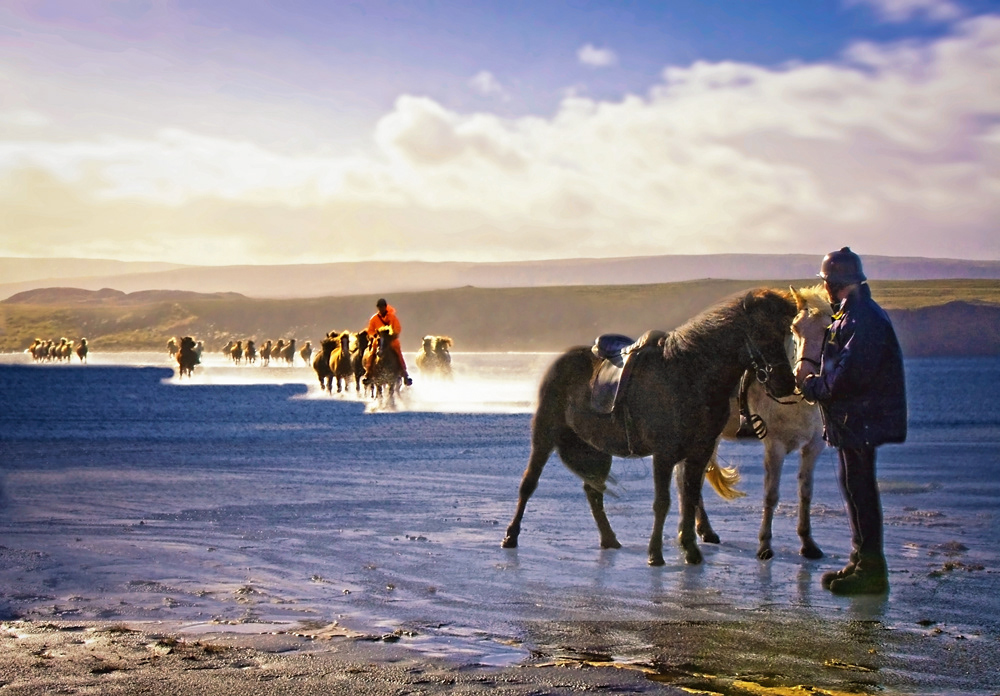

It is imperative for the front riders to stay ahead of the herd at all times. If they are passed by dominant herd members, the herd may choose to follow those horses instead of the designated riders. As a result, by changing the original direction, the loose horses--now in front--create chaos.



Being a front rider is a highly skilled job and during treks only some of the guides are allowed to perform it. One needs to be on one’s toes constantly and not get distracted for even an instant.
This makes it the important thing for hind riders not to push the herd to a higher speed.
Typically, trek participants, are kept a short distance behind the herd so that they don’t get overly tempted to push. Regardless of you not getting any glory, watching a huge herd of horses streaming in front of you is an amazing sight




When riding across lands--like the highlands--where herds of horses have been turned out to graze, complications can occur and more than a usual number of front riders are needed.
Every time a grazing herd is spied in the distance, one or more front riders must shoot out at a fast gallop and chase away that herd before its members get tempted to approach and try to join in the fray.
If your herd get mixed up with another or even if just one member of either herd gets misplaced, it is very arduous and time consuming to get the individual horses separated again. If you have added horses to your herd you can usually isolate them at the next reeht where their owners can pick it up later. If you loose a horse, it is difficult to know when--if ever--you will see it again.

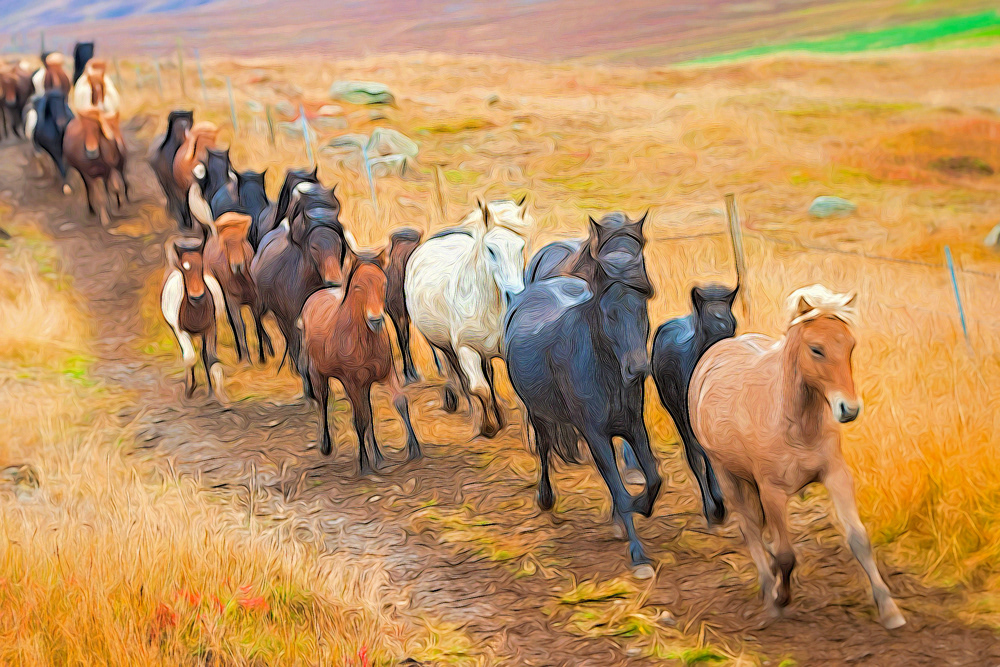

Another difficulty comes when you cross stretches of barren land like lava deserts. The lack of grass there and the smell of grass in the distance make the horses push forward at a much faster speed than usual.



One of the things riders quickly need to learn on a trek is not to micro manage their mounts. The horses know much better than any human how to balance and what is the best thing to do. The trick is to just hang on and enjoy the ride.
Whereas the horses will listen to your instructions, one will under no circumstances allow itself to be left behind by the herd. The longer anyone tries to restrain one, the faster it will run to catch up with the others after the herd has dropped out of sight and you eventually have lost ALL control.



Traveling many miles a day riding several unfamiliar horses over uneven terrain can be an exhausting experience. Not only does it insure you sleep well during the night, but it also gives you an understanding of the horse you could not have gotten in any other way. Being a part of an adventure of this dimension makes you aware of just how amazing the Icelandic Horse and the Icelandic culture is.
You have my guarantee, that if you choose to travel in the footsteps of the Vikings, you will never again be the same arrogant person you used to be. Nor will you ever be able to view the horse with the same patronizing eyes.



One of the most amazing experiences I have had was attending my first Landsmot 50 or so years ago. At the time it was tradition to ride to the Landsmot from whatever part of the country you lived, and every self respecting horseman did so.
In the day or so before the show group after group of riders with loose herds would arrive. All of the horses were turned loose in one large corral and by the end of the night 10,000 horses were peacefully grazing there next to one another. Sadly that tradition has ended as well as many others have. The good thing is that the fundamental Icelandic Culture hasn't and other great traditions are taking the, now, obsolete ones place.






